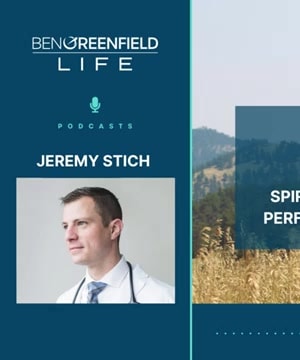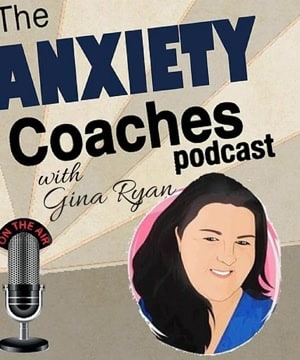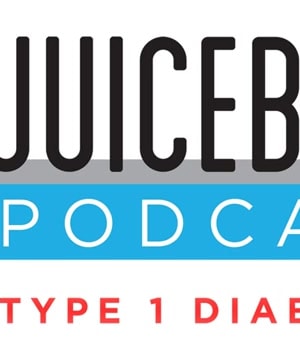Trauma therapy to help with anger issue
Sources:
Addressing anger issues through trauma therapy involves a multifaceted approach focused on understanding and processing underlying trauma. Here are key insights from experts on the subject:
-
Compassionate Self-Work: , founder of Compassion Focused Therapy, emphasizes the importance of a slow, step-by-step approach in trauma therapy. He advises working with a therapist to ensure support and guidance. Key emotions to address include anger, anxiety, and grief, which should be approached with self-compassion 1.
-
Understanding Trauma Responses: , an expert in addiction and trauma, explains that trauma is not the event itself but the internal response to it. Suppressing anger as a child can lead to unresolved emotional issues that impact physical health. As individuals heal, they often reconnect with suppressed emotions, including anger, which is a crucial step towards recovery 2 3.
-
Processing Anger in Therapy: Dr. Jacob Ham discusses helping clients navigate between authenticity and compartmentalization. Recognizing and embracing anger appropriately can serve as a signal that something is wrong and needs attention. Thus, therapy often involves validating and safely expressing this anger 4.
-
Cognitive Reframing: , a specialist in Cognitive Processing Therapy, focuses on helping individuals reorganize their thoughts about their trauma. By acknowledging and reprocessing their emotions, including anger, they can achieve a more balanced emotional state 5.
-
Rejecting Catharsis: Contrary to popular belief, venting anger through aggressive actions like yelling or hitting objects can actually worsen the emotional state. Chip Tafrate advises against catharsis, suggesting instead that individuals learn to manage their reactions through healthier coping mechanisms 6.
By following these expert recommendations, individuals can work through their trauma effectively, leading to better management of anger and other associated emotions.
-
What age can kids differentiate left and right
Sources:
Research suggests that children typically begin to differentiate between left and right around the ages of 5 to 6 years old. This developmental milestone coincides with emerging executive function skills, which help children articulate their feelings and manage their actions more effectively. By providing appropriate vocabulary and modeling tasks (e.g., "This is your left hand"), caregivers can assist in developing this spatial awareness 1.
RELATED QUESTIONSWhat’s the best age gap for couples
Sources:
Sex therapist and podcast host discusses the challenges and dynamics of age gap relationships on her podcast . Research and studies indicate that an age gap of ten years or fewer is generally ideal. Greater age differences tend to bring more challenges, including differing values, goals, and life stages, which can impact long-term relationship satisfaction.
Specifically, heterosexual couples with small age gaps (1-3 years with the man older) tend to report the highest levels of satisfaction, while satisfaction decreases with larger age gaps (4-6 years and beyond) 1 2 3.
Furthermore, and emphasize the importance of shared interests and the ability to negotiate developmental needs at different ages for relationship success, rather than focusing solely on the numerical age gap 4.
Ultimately, while small age differences are generally more stable, it's crucial for couples to have aligned life stages, shared interests, and open communication to navigate any age gap successfully.
RELATED QUESTIONSIs female masterbation just as bad as male masterbation
Sources:
Experts generally find that there are no inherent differences between female and male masturbation in terms of health or harm.
, a sex therapist, emphasizes that masturbation is beneficial for both men and women. It increases self-awareness, helps individuals understand their bodies, and can enhance sexual experiences with partners. She advocates for masturbation as part of a healthy self-care routine and debunks the myth that it is harmful or shameful. Morse notes that societal and cultural stigmas often make female masturbation seem more taboo compared to male masturbation 1 2 3.
Similarly, and discuss the hormonal effects of masturbation. While they highlight some differences, such as varying impacts on testosterone and estrogen, they agree that masturbation itself, when not obsessive or addictive, is not inherently bad for either gender and can be a positive part of sexual health and exploration 4 3.
Overall, the consensus among experts is that healthy masturbation practices are beneficial regardless of gender. The key is to avoid excessive or compulsive behaviors that interfere with daily life and relationships.
RELATED QUESTIONSHow much masturbation is too much?
Sources:
Experts on the topic suggest that masturbation becomes problematic when it interferes with daily life, causes physical harm, or turns into an obsessive behavior.
discusses that while masturbation can become an unhealthy obsession for some, he has managed to keep it within a healthy range. He mentions attending support groups where others have expressed difficulties in controlling the habit. Issues arise when masturbation is performed even when it causes physical pain, or when individuals engage in it excessively, such as 50-60 times a day 1.
In essence, the key signs of excessive masturbation include:
- Interference with daily activities and responsibilities
- Causing physical pain or injury
- Becoming a compulsive or obsessive behavior
Monitoring these aspects can help individuals determine if their masturbation frequency might be excessive and consider seeking professional advice if needed.
RELATED QUESTIONSWhat are the signs of masturbation addiction?
Sources:
Signs of masturbation addiction can manifest in several ways. Experts emphasize recognizing negative consequences in different aspects of life.
-
Interference with Daily Life: If masturbation interferes with your daily responsibilities, such as work, social activities, or personal relationships, it could be a sign of addiction. This includes calling in sick to work frequently to masturbate or spending excessive time engaged in the activity, leading to neglected responsibilities 1.
-
Physical Harm: Engaging in masturbation to the point of causing physical pain or injury, such as making oneself raw, is a clear sign that the behavior might be excessive 1.
-
Escalating Behavior: Needing to watch increasingly intense porn to achieve satisfaction can also indicate a problem. When the content needed to stimulate becomes progressively more extreme, it may be a sign of habituation and potential addiction 2.
-
Loss of Interest in Partner: A notable decrease in sexual interest in real-life partners, coupled with a preference for masturbation, particularly with porn, could reflect an unhealthy dependency 3.
-
Difficulty Stopping: Repeated failed attempts to cut back or stop masturbating are another strong indicator. If there is a persistent desire or unsuccessful efforts to control the behavior, it might be considered addictive 2.
Addressing these signs early and seeking professional help, if necessary, can help manage and reduce the impact of these behaviors.
RELATED QUESTIONS-
Should I allow narcissist to co parent
Sources:
Co-parenting with a narcissist presents unique and significant challenges. According to experts, it is crucial to consider several factors and adopt specific strategies:
-
Parallel Parenting Approach: Instead of traditional co-parenting which requires cooperation, parallel parenting involves both parents operating independently with minimal direct contact. This approach can reduce the conflict inherent in dealing with a narcissistic co-parent while still focusing on the child's welfare. In this setup, communication is strictly about the child and often managed through written means or intermediaries to minimize emotional manipulation 1.
-
Focus on Mental Health: Maintaining your mental health is paramount. Engaging with a narcissistic co-parent can be mentally exhausting and traumatic. Experts suggest prioritizing self-care and utilizing supportive networks or therapy to cope with the stresses and emotional impacts of dealing with a narcissistic individual 1.
-
Protecting the Child: Narcissistic parents can have a damaging impact on their children, including emotional neglect and manipulation. It's essential to be observant and proactive about any signs of distress or behavioral changes in your children. Clear and age-appropriate communication about the other parent's behavior can help children understand and process their experiences 1 2.
-
Legal and Strategic Considerations: Sometimes, legal intervention might be necessary to protect the child's interests. Courts can impose specific parenting plans that limit interaction to reduce conflict. Additionally, being strategic about how you communicate with the narcissistic parent can sometimes leverage their traits to the child's benefit (e.g., appealing to their ego positively might sometimes reduce adverse behavior) 3 4.
-
Managing Expectations: Accepting that the narcissistic co-parent will not change and letting go of the hope for justice or fairness can be liberating. Instead, focus on your child's needs and your healing process. Understand that the child will invariably face challenges due to the narcissistic parent, and providing a stable, loving environment can mitigate some of the impacts 2 5.
In deciding whether to allow a narcissist to co-parent, consider adopting these strategies and seeking professional guidance to ensure the best possible outcome for your child.
RELATED QUESTIONS-
Narcissist parent effect on toddler
Sources:
A narcissistic parent can have profound and lasting effects on a toddler, impacting their development and self-perception in various harmful ways:
-
Lack of Identity and Autonomy: Narcissistic parents often view their children as extensions of themselves, expecting them to fulfill their own unmet needs and conform to their desires. This perspective stifles a child's ability to develop their own identity and autonomy 1 2.
-
Emotional Neglect and Manipulation: These children may internalize their parent's resentment for having needs, leading them to suppress their own desires and emotions. They learn that their well-being is less important, causing them to become highly anxious, self-doubting, and prone to seeking validation through compliance and perfectionism 1 3.
-
Psychological Servitude: Toddlers with narcissistic parents might continually adjust their behavior to avoid conflict or gain approval, which can result in obsessive or compulsive tendencies. The constant need to "win over" the narcissistic parent ingrains a transactional understanding of relationships, which can follow them into adulthood 1 4.
-
Shame and Low Self-Worth: Growing up with a narcissistic parent often involves being shamed for their needs and emotions. This experience teaches children to devalue and mistrust themselves, making them more likely to struggle with low self-worth and inaccurate self-appraisal 5 6.
-
Fawn Response: According to Dr. Ramani, children with narcissistic parents often develop a "fawn response," where they continuously monitor and attempt to regulate their parent's mood to maintain peace. This involuntary behavior can become a long-term coping mechanism, affecting their interactions with others even in adulthood 6.
-
Emotional Dependency and Anxiety: The need to constantly adjust to their parent's emotional state leads to a high level of dependency and anxiety. These children might feel responsible for their parent's happiness and wellbeing, neglecting their own needs and perpetuating a cycle of emotional neglect 7 8.
Overall, the impact of growing up with a narcissistic parent is detrimental, often resulting in significant emotional and psychological challenges that can persist into adulthood.
RELATED QUESTIONS-
How can a toddler cope with a narcissistic parent?
Sources:
Coping with a narcissistic parent as a toddler requires a nuanced approach, primarily because toddlers depend heavily on their parents for emotional and physical needs. Here are some key strategies, as explained by experts:
-
Recognize It's Not Their Fault: Dr. Ramani Durvasula emphasizes that children should understand that having a narcissistic parent is not their fault. It is a stroke of bad luck, and knowing this can help alleviate unwarranted guilt or self-blame 1.
-
Cultivate a Connection with a Healthy Parent: When possible, the involvement of a healthy parent is crucial. This figure can provide the stability and emotional support the child needs. Dr. Ramani notes that having even one reliable parent can significantly mitigate the damage caused by a narcissistic parent 1.
-
Therapeutic Intervention: Although it may be challenging for young children, early interventions with child psychologists or counselors who understand narcissistic abuse dynamics can be beneficial. They can equip toddlers with coping mechanisms and provide the family with strategies to handle the narcissistic parent's behavior more effectively 1.
-
Emphasize Identity and Autonomy: Ensuring that the toddler has spaces or activities where they can express themselves and make choices helps in developing a sense of autonomy and individuality, which is often stifled by a narcissistic parent 2.
-
Boundaries and Safety: For older children and adolescents, establishing firm boundaries to protect their mental and emotional well-being is necessary. This might involve limiting interactions with the narcissistic parent in safe ways and engaging in activities that promote their self-worth and emotional health 3 4.
While these strategies may require support from other family members or professionals, implementing them can help buffer the negative impact a narcissistic parent might have on a toddler's development.
RELATED QUESTIONS-
How can I protect my child emotionally?
Sources:
Protecting your child emotionally involves several strategies rooted in empathy, communication, and resilience-building. Here are key insights from experts:
-
Validate Their Feelings: It's essential to acknowledge and validate your child's emotions. Ignoring or dismissing their feelings can lead to emotional detachment. Instead, listen to them and understand their perspective without immediately trying to fix the problem 1.
-
Build Secure Attachments: Establish a strong, positive relationship where your child knows they are cared for unconditionally. A secure attachment with a caregiver makes them resilient when facing adversities. This attachment ensures that they feel loved and supported, which is crucial for their emotional health 2.
-
Encourage Emotional Expression: Children need to feel safe expressing their emotions, especially difficult ones like sadness or anger. Allow them to talk about their feelings and ensure these expressions don't threaten their relationship with you. This open communication helps prevent emotional repression and fosters better emotional health 3.
-
Use Emotion Words: Talking about emotions using specific words can help children understand and manage their feelings. For example, if a child is upset because of a conflict at school, acknowledge their feelings and discuss how to cope with them. This approach helps them recognize their emotions and teaches them effective ways to handle challenging situations 4.
-
Empathize and Co-regulate: Mirror your child's emotions to help them feel understood. If they say they're scared, instead of immediately reassuring them that there's nothing to fear, acknowledge their fear and express empathy. This co-regulation helps them learn to manage their emotions through empathetic support 5.
-
Seek Support When Needed: If your child is dealing with significant emotional issues, don't hesitate to seek help from other supportive adults or mental health professionals. Ensure they know you’re there for them and will work together to find the support they need 6.
By consistently practicing these strategies, you can create a supportive and nurturing environment that promotes your child's emotional well-being.
RELATED QUESTIONS-
What are signs of narcissistic parenting?
Sources:
Signs of narcissistic parenting can manifest in several detrimental ways. Here are some key indicators:
-
Dismissiveness and Devaluation: Narcissistic parents often display a consistent pattern of dismissing and devaluing their child's emotions. They may shame or humiliate their child and expect them to align their goals and interests with the parent's desires. This behavior can include comments like, “What do you mean you don’t want to go to [specific college]?” and dismissing the child's own aspirations 1.
-
Selfishness and Inattentiveness: These parents tend to be extremely selfish and inattentive, prioritizing their own needs and desires over those of their child. They may show a lack of genuine interest in their child’s well-being or progress unless it directly benefits them 1.
-
Excessive Control and Expectations: Narcissistic parents often exert high levels of control over their children, reflecting their own aspirations and expectations. They see their children as extensions of themselves, valuing them primarily for how they enhance their own status rather than for who the child is as an individual. This can lead to an environment where the child constantly strives to meet unrealistic standards 2 3.
-
Emotional Manipulation and Guilt: These parents are prone to using guilt and emotional manipulation to control their children. They might shame the child for having needs, calling them greedy or selfish. This manipulation creates an emotionally abusive environment where the child’s self-worth is consistently undermined 1 4.
-
Rage and Walking on Eggshells: A common trait is the presence of unpredictable rage, making the household environment volatile. Children often feel like they are "walking on eggshells" to avoid triggering their parent's anger. This chronic stress can severely impact the child’s emotional health 1 1.
-
Parental Use of Children for Validation: Narcissistic parents may use their children to fulfill their own need for attention and admiration. They become overly involved in their child’s achievements, not out of genuine interest, but to receive praise and validation themselves. This often involves pushing the child to excel in areas that the parent values, regardless of the child's own interests or capabilities 5 1.
These behaviors can lead to long-term emotional and psychological issues for children, including a lack of self-worth, chronic anxiety, and difficulties in forming healthy relationships later in life 4.
RELATED QUESTIONS-
What are the long-term effects on children?
Sources:
The long-term effects of growing up with a narcissistic parent can be profound and multifaceted, impacting various aspects of a child's psychological and emotional development. Here are some key insights:
-
Anxiety and Self-Doubt: Children of narcissistic parents often develop significant anxiety. This includes general anxiety, social anxiety, and chronic self-doubt. They may constantly feel they are not good enough and struggle with questions like “Am I enough?” This sense of inadequacy can permeate various facets of their lives 1.
-
Distorted Self-Worth and Identity: These children frequently devalue themselves, having absorbed the negative self-appraisal from their parents, leading to a distorted sense of self-worth. They may internalize shame and struggle with believing in their own capabilities or pursuing their true interests due to the constant undermining of their identity by the narcissistic parent 2 3.
-
Difficulty in Relationships: As adults, these individuals often struggle in relationships, tending to replicate the dynamics of their upbringing. They might seek out partners who echo the traits of their narcissistic parent, leading to further emotional turmoil. This pattern is driven by a subconscious attempt to "win over" their partners, mirroring the transactional nature of their childhood relationships 4 5.
-
Emotional Problems: The children of narcissistic parents may face a range of emotional issues, including depression and low self-esteem. The lack of empathy and emotional support from the parent teaches the child to suppress their own emotions, leading to poor emotional regulation and a persistent feeling of insignificance 4 6.
-
Complex Trauma and Coping Mechanisms: In extreme cases, the impact can manifest as complex trauma, with lifelong struggles such as addiction or even developing narcissistic traits themselves. Many face challenges with healthy coping mechanisms, often leading to further psychological distress 1.
-
Hampered Personal Development: Narcissistic parents often use their children to fulfill their own needs. This dynamic thwarts the child's personal development and identity, forcing them to align with the parent's desires at the expense of their own growth. Such children learn to make themselves smaller and suppress their own needs to avoid conflict, impacting their autonomy and sense of self 4 3.
These insights highlight the importance of recognizing and addressing the impacts of narcissistic parenting early, as the consequences can be deeply ingrained and challenging to overcome without proper support and intervention.
RELATED QUESTIONS-
Photobiomodulation therapy benefits
Sources:
Photobiomodulation therapy, also known as low-level light therapy, has a wide range of benefits according to experts. Here are some of the primary advantages:
-
Boosts Cellular Function: This therapy enhances cellular function by restoring healthy cellular operations, boosting ATP production, and helping with energy metabolism at a cellular level. This is crucial for improving overall cellular health 1.
-
Reduces Inflammation: Photobiomodulation switches monocyte/macrophage phenotypes to an anti-inflammatory state, which is beneficial in reducing chronic inflammatory conditions, such as joint pain and tendon injuries 2.
-
Stimulates Stem Cells: It can also stimulate stem cells in the bone marrow, helping them mobilize and travel to areas of injury for repair. This makes it useful for conditions requiring tissue regeneration, like after a heart attack or stroke 3.
-
Improves Neurological Function: Photobiomodulation has shown promise in treating various brain disorders, including Alzheimer's disease, Parkinson's disease, depression, anxiety, and PTSD. By stimulating the brain, it helps repair neurological damage and reduces inflammation 3.
-
Enhances Skin Health: This therapy can stimulate collagen production in the skin, which may help with skin rejuvenation, wrinkle reduction, and healing skin wounds. However, the effects on skin health are generally modest 4 3.
-
Aids in Muscle Recovery and Athletic Performance: Athletes use photobiomodulation to prepare for events and enhance recovery post-exercise. It helps reduce muscle soreness and improve performance by reducing inflammation and oxidative stress 5 1.
-
Pain Management: It is effective in managing chronic pain by reducing inflammatory factors and promoting healing. This effect is particularly notable among retired athletes and others with chronic injury issues 6.
Overall, photobiomodulation therapy has a broad spectrum of benefits, ranging from cellular health improvement to significant effects on inflammatory conditions and neurological disorders. It is a versatile modality that can complement other health interventions effectively.
RELATED QUESTIONS-
Photobiomodulation therapy vs red light therapy
Sources:
Photobiomodulation therapy (PBM) and red light therapy are often used interchangeably, as they both use similar light wavelengths to achieve therapeutic effects. Here are some key insights from experts:
-
Definitions and Uses:
- Photobiomodulation Therapy: Encompasses the use of various light wavelengths, including red and near-infrared, to enhance cellular function and promote healing across numerous conditions like inflammation, neurological disorders, and tissue repair.
- Red Light Therapy: A specific subset of PBM, primarily using red and near-infrared light to stimulate cellular processes, particularly effective for skin health, muscle recovery, and reducing inflammation 1 2 3 .
-
Mechanisms and Benefits:
- Both therapies work by stimulating the mitochondria within cells, enhancing ATP production, which boosts cellular energy and performance 4 3.
- Therapeutic Applications: Red light therapy shows effectiveness in promoting collagen production, hair regrowth, improving skin conditions, and aiding recovery post-exercise 2 4 5.
- Neurological Benefits: PBM, including red light therapy, is explored for brain health, potentially benefiting conditions like Alzheimer's, Parkinson's, depression, and PTSD by reducing inflammation and promoting brain repair 6 7.
-
Safety Profiles:
-
Scientific Support and Popularity:
- Red light therapy is backed by extensive research, indicating significant benefits in reducing pain and inflammation, improving skin health, and enhancing muscle recovery. PBM’s broader therapeutic scope includes all these benefits and more, reflecting their growing popularity and use in wellness routines 4 8.
In summary, while red light therapy is a key component of photobiomodulation therapy, it emphasizes the use of red and near-infrared light. Both therapies offer overlapping benefits, with significant scientific backing supporting their efficacy and safety.
RELATED QUESTIONS-
Is not being able to sweat an issue
Sources:
Yes, not being able to sweat can be a significant issue. Sweating is essential for regulating body temperature, and an inability to sweat, known as anhidrosis, can lead to severe overheating and potentially life-threatening conditions like heat stroke.
-
Heat Regulation:
- Critical for Cooling: Sweating helps dissipate heat from the body through evaporation. If you can't sweat, your body struggles to cool down, leading to overheating 1 2.
- Indicators of Serious Conditions: During intense heat or physical exertion, being unable to sweat can indicate imminent heat stroke. Symptoms include dry, red skin, confusion, and potential loss of consciousness 3 4.
-
Medical Conditions and Risks:
- Heat Stroke and Other Risks: People with anhidrosis are at increased risk during hot conditions or strenuous activities. Exercise without sweating can cause the body to overheat, as seen in runners or athletes 3 5.
- Impact of Medications: Certain medications, particularly some antipsychotics and SSRIs, can reduce sweating. This can be dangerous in hot environments or during activities that raise body temperature 6.
- Special Considerations: People with anhidrosis must monitor their activities and surroundings carefully, stay hydrated, and avoid extreme heat to prevent overheating and associated illnesses 1 2.
-
Training to Improve Sweating:
- Heat Acclimation Training: It may be possible to train your body to sweat more effectively through heat exposure, such as using a sauna or hot environment practices. This can be particularly useful for athletes and those who need to perform in hot conditions 7.
Overall, an inability to sweat is a serious condition that requires careful management to avoid dangerous health consequences.
RELATED QUESTIONS-
What causes gastritis
Sources:
Gastritis, an inflammation of the stomach lining, can be caused by several factors. Based on insights from trusted experts, the primary causes include:
-
Helicobacter Pylori (H. pylori):
- Bacterial Infection: This gram-negative bacteria can significantly increase inflammation in the stomach and contribute to conditions like acid reflux and peptic ulcers. H. pylori produces inflammatory mediators that can lead to gastritis when levels get too high 1 2.
- Discovery and Impact: Initially, it was believed that bacteria couldn't survive in the acidic environment of the stomach, but later research by Barry Marshall and Robin Warren showed that H. pylori can indeed thrive there, leading to gastritis and ulcers 2 3.
-
Diet and Lifestyle:
- Poor Diet: High consumption of processed foods, alcohol, caffeine, acidic foods (like citrus fruits and tomatoes), and spicy foods can exacerbate or trigger gastritis. These dietary factors can irritate the stomach lining and lead to inflammation 1 4.
- Stress: Psychological stress affects gut health by increasing stomach acid production and impacting gut flora composition, which can contribute to gastritis 4.
-
Medications:
- Nonsteroidal Anti-inflammatory Drugs (NSAIDs): Frequent use of NSAIDs (like ibuprofen and aspirin) can irritate the stomach lining and increase the risk of gastritis.
- Acid Blockers and Antibiotics: Overuse of acid blockers and certain antibiotics can disrupt gut flora, leading to conditions like gastritis 4.
-
Other Factors:
- Alcohol: Excessive alcohol consumption is a known irritant to the stomach lining, potentially leading to gastritis.
- Autoimmune Disorders: In some cases, the body's immune system attacks the stomach lining, causing gastritis.
Understanding and addressing these causes are crucial for effective management and prevention of gastritis. Reducing risk factors like diet, stress, and medication use under medical guidance can help mitigate symptoms and promote gut health.
RELATED QUESTIONS-
How is gastritis treated?
Sources:
Gastritis can be treated with a combination of lifestyle changes, dietary adjustments, and medications. The specific treatment plan may vary depending on the underlying cause and severity of the condition. Trusted experts recommend the following approaches:
-
Medications:
- Antibiotics: If gastritis is caused by an H. pylori infection, antibiotics are often prescribed. These have greatly improved outcomes, replacing more invasive treatments like surgery for stomach issues 1.
- Proton Pump Inhibitors (PPIs): These medications reduce stomach acid production, helping to heal the stomach lining. However, PPIs should be used cautiously and tapered off gradually to avoid rebound acid production 2.
- H2 Blockers: These reduce acid production and are sometimes used as a step-down strategy from PPIs 3.
-
Diet and Lifestyle Changes:
- Diet Adjustments: Avoiding spicy foods, citrus, tomatoes, fried foods, chocolate, alcohol, and caffeine can help manage symptoms. Incorporating more nourishing, less irritating foods like broths and well-cooked meals is beneficial 4.
- Apple Cider Vinegar: Conducting an apple cider vinegar test can help determine stomach acid levels and mucosal integrity. If irritation occurs, it indicates a weakened gastric lining that needs healing before adjusting acid levels with supplements like betaine HCL 5 6.
- Natural Supplements: Supplements such as glutamine, marshmallow root, slippery elm, licorice root, and aloe vera can support and repair the gastric lining 5.
-
Functional and Natural Approaches:
- Functional Medicine: Addressing root causes such as H. pylori, food sensitivities (like gluten), and gut flora imbalances through stool testing and specific elimination diets can provide long-term relief 2 6.
- Gradual Tapering Off Medications: For those on long-term acid-blocking medications, tapering off gradually while incorporating lifestyle and dietary changes helps prevent rebound acid production 3 2.
-
General Health Measures:
- Stress Management: Reducing stress through relaxation techniques can also help as stress affects stomach acid production and overall gut health.
- Regular Monitoring: Regular follow-ups with a healthcare provider are crucial, especially when using supplements or medications to adjust treatment as needed.
By addressing both the symptoms and underlying causes, the management of gastritis can be more effective and provide lasting relief.
RELATED QUESTIONS-
H2 blockers
Sources:
H2 blockers, also known as H2 receptor antagonists, are medications that reduce stomach acid production by blocking histamine H2 receptors in the stomach lining. Commonly used H2 blockers include ranitidine (Zantac), famotidine (Pepcid), and cimetidine (Tagamet).
Key Points on H2 Blockers:
- Function: H2 blockers decrease the amount of acid produced in the stomach by inhibiting the histamine signals.
- Usage: They are often prescribed for conditions like gastroesophageal reflux disease (GERD), peptic ulcers, and chronic gastritis.
- Accessibility: These drugs are available both by prescription and over-the-counter.
- Side Effects: While generally considered safe for short-term use, long-term usage can lead to side effects such as vitamin B12 deficiency, and mineral deficiencies (e.g., magnesium and zinc), osteoporosis, and increased risk of bacterial infections in the stomach due to altered pH levels 1.
- Tapering Off: Long-term users trying to quit H2 blockers should taper off the medication gradually to avoid rebound acid production. This process involves slowly reducing the dosage and integrating other supportive strategies to manage symptoms effectively 2.
Understanding the potential risks and proper management can help optimize their use while minimizing complications. For those needing long-term treatment, regular consultations with healthcare providers are recommended to monitor and adjust therapy as necessary.
RELATED QUESTIONSHealing techniques from narcissistic abusive relationship
Sources:
Healing from a narcissistic abusive relationship involves multiple stages and requires a combination of emotional validation, practical steps, and long-term strategies. Experts highlight several key aspects of the healing process:
Key Healing Techniques:
-
Lack of Closure and Justice:
- The absence of closure and justice in narcissistic relationships significantly impedes healing. This injustice exacerbates the survivor's trauma and complicates the recovery process. Justice and a sense of fairness are crucial for effective trauma healing 1.
-
Radical Acceptance:
- Accept the reality that the narcissist's behavior won't change. This acceptance helps remove false hope and facilitates healing. It's about understanding and acknowledging the hurt without expecting any transformation from the abuser 2.
-
Therapeutic Support:
- Working with a therapist who specializes in trauma, domestic violence, and narcissistic abuse is essential. Such professionals focus on empowering the survivor and avoiding victim-blaming, crucial for reclaiming one's power and starting the healing journey 3.
-
Emotional Release:
- Allow yourself to feel and release the pain. Techniques like listening to music that resonates with your emotions, crying, and physically moving to express your feelings can be therapeutic. This emotional release is a vital first step in healing 4.
-
Reflect on the Relationship:
- Objectively evaluate how the narcissist failed to meet your needs and how they hurt you. Creating an emotional stack of all the negative experiences can help you see the relationship clearly and reinforce your decision to move on 4.
-
Finding Your Voice and Creativity:
- Many survivors find strength and creativity post-recovery. Engaging in new activities, such as writing, blogging, starting a business, or pursuing educational goals, can be empowering and help rebuild self-esteem 5.
-
Self-Distancing Techniques:
- Techniques like self-distancing, where you refer to yourself in the third person, activate the prefrontal cortex and help manage emotions better. This approach aids in creating a psychological distance from the trauma, making it easier to cope 6.
-
Physical and Mental Separation:
- Healing can happen while still in the relationship, but physical and mental separation often accelerates recovery. The more distance and time you have away from the abuser, the easier it becomes to reclaim your life and mental health 7.
Long-term Steps:
- Boundaries: Establish and maintain strong personal boundaries to protect yourself from further harm.
- Support Networks: Build and rely on a supportive network of friends, family, or support groups who understand your experience.
- Self-Compassion: Practice self-compassion and self-care to rebuild your self-worth and foster resilience against setbacks.
Survivors of narcissistic abuse can achieve remarkable recovery and personal growth by following these steps and seeking professional guidance tailored to their unique situations.
RELATED QUESTIONS-
Tantric healing
Sources:
Tantric healing is a multifaceted approach that integrates spiritual, emotional, and physical practices to promote overall well-being and personal transformation. Experts have discussed various aspects of tantric healing, highlighting its potential benefits and practical applications:
Key Aspects of Tantric Healing
-
Emotional and Physical Blockages:
- Magda Kay, an intimacy expert and tantra teacher, shares her journey of diving into tantric practices to release blockages caused by past traumas and unhealed emotional issues. Through tantra, she was able to identify and heal energy blockages in her body, leading to profound personal transformation 1.
-
Somatic and Sexual Healing:
- Angelika Alana emphasizes the role of somatic and sexual healing practices in liberating repressed primal instincts and integrating traumatic experiences. She found that combining somatic practices, such as yoga and Tantra, was crucial in addressing deep-seated emotional wounds and enhancing personal growth 2.
-
Full-Body Orgasmic States:
- Lorae Lauridge explains the transformative power of tantric orgasms, which transcend conventional genital-focused orgasms. Tantric techniques involve breathwork and energy build-up that facilitate full-body orgasmic states, aiding in the release of guilt and shame, which are common emotional barriers in healing 3.
-
Healing Through Non-Ordinary Realities:
- Kristina Kincaid explores deeper levels of healing by engaging with alternative methods beyond conventional reality. Her journey included working with shamans and attending specialized healing schools, which opened doors to profound personal insights and healing from sexual trauma 4.
-
Empowerment and Acceptance:
Practical Steps for Tantric Healing
-
Learning and Exploration:
- Engage in courses, workshops, or guided sessions to learn various tantric practices. Education is crucial for understanding and applying these techniques correctly.
-
Breathwork and Meditation:
- Incorporate breathwork and meditative practices to connect with your inner energy and facilitate emotional release.
-
Professional Guidance:
- Work with experienced tantric healers or therapists who can provide personalized guidance and support throughout your healing journey.
-
Consistent Practice:
- Regularly practice tantric techniques such as yoga, breathwork, and intimate exercises with a partner or solo to deepen the healing process.
-
Embrace Vulnerability and Emotional Release:
- Allow yourself to be vulnerable and release pent-up emotions through crying, laughing, and other expressive forms of emotional release.
Tantric healing offers a holistic approach to addressing deep-seated emotional and physical wounds, fostering a pathway to personal transformation and deeper connections with oneself and others. By exploring and embracing these practices, individuals can achieve significant healing and personal growth.
RELATED QUESTIONS-
How can I begin tantric healing?
Sources:
Starting your journey with tantric healing involves exploring various practices and techniques to connect with your energy, emotions, and spiritual self. Here are some steps to begin:
-
Understand and Harness Your Energy:
- Jill Blakeway, an expert in energy healing, suggests grounding yourself to feel and harness your own energy. This can be done by bringing your hands together and slowly moving them apart to sense your own field, which can feel tingly or warm. This practice helps in connecting with your inner light, which can be used to affect yourself and others positively 1.
-
Breathwork and Embodied Mindfulness:
- Angelika Alana emphasizes using breathwork to activate energy in your body. Breath through your mouth deeply and notice the sensations, which may feel like a natural high. This can be a starting point to explore higher states of consciousness and energy movements within your body 2.
- Practicing yoga and other body-based healing arts can also help you connect with and integrate your emotions and traumas into your physical self 2.
-
Intentional Touch and Sexual Healing:
- Kristina Kincaid shares the importance of intentional touch in healing. Instead of sexual intention, place your heart over areas needing healing to offer pure, loving energy. This can create profound healing experiences 3.
-
Create Sacred Spaces:
- Shamini Jain recommends establishing a sacred space at home or in the office where you can practice quietly. Sound an invocation or create rituals to open your mind and field to the healing process. This process can involve holding your desires in your heart, asking for support, and then surrendering it to foster strong healing outcomes 4.
-
Explore Full-Body Relaxation and Orgasmic States:
- Lorae Lauridge discusses achieving full-body orgasms through tantric practices, which involve moving energy through breathwork and physical exercises like Kegel exercises. These practices help release emotional blocks and embrace a deeper connection with your partner and yourself 5.
-
Guidance from Professionals:
- Seek out workshops, classes, or professional guidance from experienced tantric healers. Many experts offer one-on-one coaching and structured programs to help you develop a deeper understanding and practice of tantric healing.
- Magda Kay offers coaching and emphasizes the importance of balancing stillness with energy activation through practices like deep breathing to harness and maintain energy effectively 6.
By integrating these practices into your life, you can begin your journey of tantric healing, exploring deeper emotional releases and enhancing your overall well-being.
RELATED QUESTIONS-
What are some tantric healing techniques?
Sources:
Here are some effective tantric healing techniques as discussed by experts:
-
Harness Breathwork and Sensations:
- Layla Martin suggests using breathwork to connect pleasure in the body, particularly in men. By breathing from the penis to the heart repeatedly during self-touch, men can heal disconnections and create a deeper, more integrated sexual experience 1.
-
Embrace Full-Body Orgasmic Energy:
- Lorae Lauridge emphasizes the importance of full-body orgasms, which are not limited to genital stimulation. Through breathwork, Kegel exercises, and yogic practices like Mula bandha (root lock), individuals can build up and release orgasmic energy throughout the entire body 2.
-
Utilize Presence and Mindfulness:
- Barbara Carrellas highlights that tantra is about presence and mindfulness during sex. This involves slowing down, being fully present in each moment, and using breath to enhance sensations. Eye contact and letting go of conventional orgasm goals also contribute to it 3.
-
Transform Desire and Embody Sensations:
- Dr. John Churchill explains the Mother Tantra practice, which involves transforming desires through embodiment. This includes practices related to sexuality, plant medicine, and massage therapy. By fully embracing desires, individuals can achieve a state of openness and transcendence 4.
-
Healing Through Sexual Practices:
- Magda Kay shares that through various tantric techniques, she could release abuse energy and heal past traumas. These practices often involve alternative energy work and deep immersion in tantric communities and teachings, such as those found in ashrams in India 5.
By integrating these practices into your daily routine, you can begin your journey toward tantric healing, unlocking deeper emotional releases, and enhancing your overall well-being.
RELATED QUESTIONS-
Classic tantra healing
Sources:
Classic tantra healing incorporates various holistic techniques aimed at balancing and healing the body, mind, and spirit. Here are some essential practices:
-
Energy Work and Alternative Modalities:
- Magda Kay describes her journey into tantra healing, which involved deep dives into energy work and practices learned in ashrams in India. These techniques helped her release trauma and heal past abuse through intensive and dedicated practice 1.
-
Intention in Healing Practices:
- Kristina Kincaid emphasizes the importance of intention in tantric healing. She recounts a transformative experience where placing her heart over a client's genitals, free from any sexual intention, led to profound emotional release and healing. This practice underscores the sacred and intentional aspect of touch in tantra 2.
-
Breathwork and Full-Body Orgasmic Energy:
- Lorae Lauridge explains the significance of breathwork and the concept of full-body orgasms in tantra. Through techniques like breath work, Kegel exercises, and the root lock (Mula bandha), individuals can channel orgasmic energy throughout the entire body, moving beyond mere genital focus to achieve deeper healing and connectivity 3.
-
Conscious Sexual Practices:
- Barbara Carrellas highlights the spiritual practice of tantra, where mindfulness and conscious engagement in sexual activities are key. By slowing down and being present in each moment with breathwork, individuals can achieve spiritual peace and physical happiness, integrating their sex life with their overall well-being 4.
These techniques create a foundation for classic tantra healing, emphasizing the importance of presence, breath, intentional touch, and energy work to release traumas and achieve holistic wellness.
RELATED QUESTIONS-
What are the benefits of tantric healing?
Sources:
The benefits of tantric healing are multifaceted, encompassing physical, emotional, and spiritual dimensions. Here are key benefits discussed by experts:
-
Enhanced Physical Sensations:
- Lorae Lauridge explains that tantric orgasms differ from typical sexual orgasms by allowing individuals to experience full-body sensations and multiple waves of orgasmic energy through practices like breathwork and energy build-up 1. This can lead to a deeper level of physical pleasure and connection.
-
Emotional Release and Trauma Healing:
- Magda Kay shares her personal journey of using tantric healing to release trauma and unblock emotional energy stored in her body. Through tantra, she was able to uncover and heal past abuses that conventional methods couldn't detect, leading to profound emotional healing 2.
-
Spiritual Growth and Connection:
- Barbara Carrellas highlights the spiritual aspect of tantra, where being fully present and mindful in each moment, particularly during sexual activities, can lead to spiritual peace and physical happiness. This practice promotes a deeper integration of sex, body, mind, and spirit, facilitating personal and spiritual growth 3.
-
Improved Relationships:
- Practicing tantra can also enhance relationships by fostering deeper connections between partners. Techniques like eye contact and synchronized breathing help couples achieve higher levels of intimacy and vulnerability, strengthening their emotional and physical bond 4.
-
Reduction of Guilt and Shame:
- By focusing on conscious breathwork and energy movements, tantric practices help individuals release societal or personal guilt and shame associated with sex. This mental clarity enables a more open and accepting attitude towards one's body and sexuality 1.
These benefits collectively support holistic well-being, making tantric healing a powerful practice for those seeking comprehensive personal development.
RELATED QUESTIONS-
How does tantric healing support emotional well-being?
Sources:
Tantric healing supports emotional well-being through several mechanisms, as explained by various experts:
-
Full-Body Sensations:
- Lorae Lauridge emphasizes the practice of full-body orgasms in tantric healing, which are not limited to genital stimulation. These practices involve breathwork and energy build-up, which help individuals release guilt and shame. This process aids in emotional clarity and reducing the emotional blocks associated with these negative feelings 1.
-
Mindfulness and Presence:
- Barbara Carellas highlights the importance of mindfulness in tantra. By slowing down and being totally present in each moment, tantra helps individuals make mindful connections between their sex life and emotional well-being. This practice fosters a peaceful state of mind and increases physical happiness, which can improve emotional stability 2.
-
Release of Traumatic Experiences:
- Angelika Alana describes how tantric practices helped her cope with her own sensitivity and trauma. Through yoga and somatic practices, she was able to integrate painful and traumatic experiences, which laid the foundation for emotional healing. These practices are about embracing and accepting all aspects of oneself, contributing to profound emotional liberation 3.
-
Physicality of Emotions:
- Dr. K HealthyGamer notes that emotions are physical as well as mental. Practices like tantric breathwork, which involve physical rituals and connections, can help release pent-up emotional energy. This supports the idea that emotional healing doesn't always require verbal expression but can also be achieved through physical and spiritual practices 4.
These aspects of tantric healing converge to create a holistic approach that nurtures and strengthens emotional well-being.
RELATED QUESTIONS-
Classic tantra healing breathwork technique
Sources:
Classic Tantric Breathwork Technique:
Full-Body Breathing:
-
Barbara Carellas explains that tantric practice uses full-body breaths for deeper sensation and presence. Most people breathe shallowly, which limits the experience. By breathing fully and deeply, you engage the entire body and help maintain mindfulness. A basic technique is to simply focus on inhaling and exhaling fully, staying aware of the body's sensations 1.
-
Connected Breathing:
- Lorae Lauridge details a practice from Sky Dancing Tantra, emphasizing connected breathing through the mouth. This method helps engage both the sympathetic (upper body) and parasympathetic (belly) responses. The technique involves inhaling deeply through slightly pursed lips as if sipping through a straw, holding the breath, and making sound on the exhale. This balances the nervous system and brings life force energy into the body 2.
Couples Breathwork:
- Ben Greenfield describes a couple's breathwork practice where partners breathe in sync, sometimes breathing out into each other's mouths, sitting intertwined, or lying beside each other. This practice enhances intimacy and connection, preparing couples for further intimate activities 3.
These methods create a profound connection to one's own body and partner, relieving stress, and enhancing emotional well-being.
RELATED QUESTIONS-
What are the benefits of tantra breathwork?
Sources:
Tantra breathwork offers a range of benefits, from enhancing physical health to deepening emotional and spiritual connections:
-
Deeper Sensations and Presence:
- Barbara Carellas highlights how tantra breathwork allows individuals to access deeper levels of feeling and sensation. By engaging in full-body breaths, practitioners can stay present, quieting the mind and experiencing enhanced connections with their partners 1.
-
Emotional Clearing and Healing:
- Anahata Ananda describes the power of shamanic breathwork in clearing emotional energy, tackling darkness, and uncovering shadow aspects of oneself. It facilitates the release of suppressed emotions and brings significant mental clarity and emotional healing 2.
- Samantha Skelly notes that breathwork helps bypass the mind to unlock and clear stuck emotions in the body, helping individuals achieve a more balanced emotional state, reduce anxiety, and improve their decision-making ability 3.
-
Transforming Stress and Anxiety:
- Josh Trent emphasizes that breathwork can quickly reduce stress, anxiety, and depression by providing an outlet for expression and helping individuals reconnect with their body's signals 4.
-
Physical Health Improvements:
- Amy Tenny discusses how breathwork can lower blood pressure, balance hormones, and even help detoxify fat. Through slow, deep breathing, it induces a state of parasympathetic relaxation, enhancing blood flow and reducing stress 5.
-
Access to Altered States:
- Espen Wold-Jensen explains that breathwork can lead to ecstatic, pain-free bliss states and mystical experiences. This super-oxygenation of the brain can induce powerful healing states, allowing for profound personal transformation 6.
Overall, tantra breathwork provides significant emotional, physical, and spiritual benefits, helping individuals connect deeply with themselves and their partners, manage stress, and achieve better overall well-being.
RELATED QUESTIONS-
Classic tantra healing technique
Sources:
Classic tantra healing techniques are focused on transforming and healing emotional and physical blockages through various practices:
-
Energy and Emotional Healing:
- Magda Kay emphasizes the importance of using alternative healing modalities and energy work to release emotional blockages that may result from past traumas, even if they are not consciously remembered. Her journey included studying tantra yoga and deepening practices in a community in Thailand, which helped her release the energy of past traumas and find healing 1.
-
Mother and Father Tantras:
- Dr. John Churchill explains the concepts of mother tantras and father tantras. Mother tantras focus on transforming desire through practices such as sexuality, plant medicine, and massage therapy. These practices help in deeply embodying experiences which can lead to transcending them. Father tantras deal with the transmutation of aversion, essentially working on transforming fear through intense practices that delve into the shadow aspects of oneself 2.
-
Healing with Intention:
- Kristina Kincaid shares a profound healing experience where the intention played a crucial role. She describes a session where she placed her heart over a client’s genitals with pure intent and no sexual aim, leading to a significant release of emotional trauma for the client. This practice emphasizes the importance of healing intentions and boundaries 3.
These techniques reveal how tantra embraces holistic healing by addressing both the physical and emotional aspects, emphasizing presence, intention, and the transformation of deeply rooted energies.
RELATED QUESTIONS-
What are some mother tantra practices?
Sources:
Mother tantra practices focus on transforming desire and fully embodying experiences. Here are some specific practices:
-
Sexuality: Utilizing sexual energy as a path to spiritual growth. This involves intimate connection with a partner, aiming for full presence and embracing the sensations and energy flow between the bodies. Letting go of conventional orgasm goals can lead to new and profound types of orgasms and connectedness 1.
-
Plant Medicine: Using plant-based substances to enhance spiritual experiences and help individuals access deeper layers of their consciousness and emotions. These practices can facilitate the release of emotional blockages and promote healing 2.
-
Massage Therapy: Engaging in therapeutic touch to awaken and move energy throughout the body. This can help in releasing physical and emotional tension, promoting overall well-being and openness 2.
-
Breathwork: Practicing deep and strategic breathing, especially through the mouth, can induce a natural state of ecstasy, enhancing energy flow and helping to reach higher states of awareness. This method is pivotal for activating and balancing energy 3.
These practices help in deeply embodying one's experiences, which paradoxically can lead to transcending them by opening into fundamental openness and fluidity.
RELATED QUESTIONS-
How do intentions shape healing?
Sources:
Intentions shape healing by influencing both the mindset and the effectiveness of various methods. Experts from different fields agree on the significant impact of intentionality in the healing process:
-
Presence and Genuine Care: Dr. James Gordon emphasizes the importance of being fully present and caring for the patient, as the energy and intention conveyed by the healer profoundly impact the healing process. Genuine care often outweighs the duration or specific methods used 1.
-
Belief and Focus: Jeremy Stich notes that the belief system of both the patient and the clinician plays a crucial role in the effectiveness of any treatment. If both parties believe in the treatment's success, outcomes tend to be significantly better. This emphasizes the necessity of a positive and focused intention in healing practices 2.
-
Intentional Rituals: Dr. Shamini Jain discusses creating sacred spaces and conducting rituals to open oneself to the healing process. Being intentional and conscious in these practices can lead to stronger healing outcomes. This process involves grounding oneself, connecting energetically, and holding a clear desire for healing 3.
-
Integration and Holistic Approach: Lesley Gould advocates for an integrated approach to healing that incorporates emotional, cognitive, spiritual, and physical aspects. This holistic method, driven by intention, ensures that services provided meet individuals where they are at, facilitating profound healing 4.
-
Empathy and Compassion: Jack Kornfield advises taking a moment's pause to align with one's highest intention, fostering understanding and compassion in interactions. This practice can transform the tone of communication and strengthen the healing connection between people 5.
By setting clear intentions and maintaining a presence of genuine care, belief, and focused attention, healing practices can be significantly enhanced, promoting better outcomes for individuals seeking relief and growth.
RELATED QUESTIONS-
How to cure dizziness
Sources:
To address dizziness, experts suggest several methods based on underlying causes:
-
Benign Positional Vertigo (BPV):
- Exercises: Jocko Willink shared how Dr. Kirk Parsley helped him overcome dizziness caused by BPV through specific head movement exercises. These include lying down, positioning the head differently, and repeating the movements to reset inner ear crystals 1.
- Simple Fixation: Focusing on a stationary point and performing head movements toward it can help override incorrect signals from the inner ear. This technique helps adjust the vestibular system and can alleviate symptoms of dizziness and nausea 2 3.
-
Blood Sugar Fluctuations:
- Dietary Management: Gina Ryan highlights the impact of blood sugar crashes on dizziness and lightheadedness. Stabilizing blood sugar through a balanced diet that includes fiber and avoids processed sugars can prevent these symptoms. Eating at regular intervals and knowing your body's fuel needs are crucial 4.
-
Hydration and Electrolyte Balance:
- Sodium Intake: Ensuring proper hydration and sodium levels, especially when sweating excessively during workouts, is key. Sal Di Stefano suggests drinking a sodium-rich electrolyte solution like LMNT before workouts to prevent dizziness caused by sodium deficiency 5.
-
Anxiety:
- Emotional Management: Managing anxiety and allowing anxious feelings to pass without reacting can help reduce feelings of dizziness. Relaxing muscles, particularly those around the neck and shoulders, helps mitigate dizziness and improve overall balance 6.
-
Medical Assessment:
- Consultation: Persistent or unexplained dizziness warrants medical evaluation to rule out head injuries or other conditions. Dale Earnhardt Jr.'s experience emphasizes the importance of consulting a healthcare provider for a thorough diagnosis and appropriate treatment 4.
To effectively address dizziness, identifying the underlying cause and applying the appropriate technique is crucial. Consult a healthcare professional for persistent or severe symptoms.
RELATED QUESTIONS-
Best practices for staying hydrated?
Sources:
Best practices for staying hydrated, as suggested by experts, include a mix of structured routines and practical tips:
Daily Habits
- Start with Water: Begin your day with a glass of water. Adding a pinch of sea salt can replenish electrolytes. This simple habit kickstarts your hydration for the day 1.
- Regular Intake: Aim to drink at least eight glasses (about two liters) of water daily. Adjust this based on activity level, climate, and personal needs 2.
- Monitor Hydration: Pay attention to signs of dehydration such as dark urine, dry mouth, and headaches. Using hydration apps can help track your intake 2.
Enhanced Strategies
- Increase Fluid Intake During Illness: In cases of respiratory illness, doubling your normal fluid intake can help thin mucus and ease symptoms 3.
- Add Electrolytes: Adding a bit of salt or using electrolyte supplements like LMNT can improve water retention and balance 1 4.
- Incorporate Hydrating Foods: Foods like cucumbers, watermelon, and oranges, which have high water content, can boost hydration 2 5.
- Visual Reminders: Keep a water bottle in view at your desk or workspace to encourage regular sips 5.
Adaptation and Tools
- Hydrogen Water: Using hydrogen water may offer additional health benefits and help meet hydration goals more effectively 2.
- Hydration-Tracking Bottles: Consider investing in a bottle that tracks your intake, and use milestone markers to create a visual and motivational aid for drinking enough water 6.
Practical Tips
- Hydrate Around Physical Activities: Ensure to drink water before, during, and after workouts to replace fluids lost through sweat 1.
- Avoid Dehydrating Beverages: Limit the intake of caffeine and alcohol as they can lead to dehydration 1.
Personalized Approaches
- Front Load Hydration: Drink more water in the morning and reduce intake later in the evening to avoid frequent nighttime urination 7.
- Use Visual and Sensory Enhancements: Adding mint leaves or fruits to water can increase your consumption due to the enhanced flavor and visual appeal 5.
Following these expert recommendations ensures that you maintain optimal hydration throughout the day, improving overall health and cognitive function.
RELATED QUESTIONSHow to heal from burn blister
Sources:
To heal from a burn blister, experts recommend the following steps for effective management and faster recovery:
-
Leave the Blister Intact: If the blister is still intact and filled with fluid, avoid popping it. Cover it with a plaster to protect the skin and pad around it to reduce pressure. This helps in preventing infection and supports natural healing 1.
-
Manage Popped Blisters Carefully: If the blister has naturally popped and there is a flap of skin, do not remove it. Instead, keep the flap in place as it provides a protective layer. Cover the area with a dry plaster, monitor for signs of infection (such as increased redness or pain), and ensure the area is clean 1.
-
Treat Debriefed Blisters Properly: For blisters where the skin is completely torn away, use hydrocolloid dressings, like Compeed, which create an ideal healing environment. These dressings can remain in place for up to a week, reducing the risk of infection and promoting faster healing 1.
-
Watch for Infection: Keep an eye out for signs of infection, such as increased redness, swelling, or pus. If these occur, seek medical attention promptly 1.
By following these expert-recommended practices, you can manage burn blisters effectively and ensure a smooth healing process.
RELATED QUESTIONS-
What to do after taking thc
Sources:
To manage the effects of THC after consumption, experts offer several strategies to ensure a safer and more comfortable experience:
-
Avoid THC Before Bed: Consuming THC, especially in higher doses or close to bedtime, can disrupt deep sleep and lead to restless sleep cycles. For a more restful night, avoid THC at least three to four hours before sleeping 1.
-
Antioxidant Intake: THC usage can increase brain reactive oxygen species (ROS) production, which may harm neuronal health. To mitigate this, increase the intake of antioxidants such as clove, allspice, or gooseberry on days when THC is used 2.
-
Monitor Dosage: Pay attention to the dosage, as high doses of THC, particularly from edibles, can cause significant anxiety and an overwhelming experience. Start with a mild dose to help manage anxiety and enjoy a more relaxed state 3.
-
Hydrate and Rest: Ensure you stay hydrated and rest adequately. If you feel groggy upon waking, it could be a sign that you consumed THC too close to bedtime. Adjust your timing accordingly to avoid lingering effects of grogginess 4.
By following these expert recommendations, you can better manage the aftereffects of THC consumption and ensure a more comfortable and safer experience.
RELATED QUESTIONS-
Is going to the gym help with jetlqg
Sources:
Experts affirm that going to the gym can be an effective strategy for combating jet lag. Engaging in physical activity upon arrival helps reset your body and improve acclimation to new time zones.
-
Immediate Workout: Upon landing, heading straight to the gym for a rigorous workout can significantly reduce jet lag. The physical exertion helps your body adjust faster to the new environment by resetting your circadian rhythm 1 2.
-
Boost NAD Levels: Exercise elevates your NAD levels, which are crucial for energy and circadian rhythm regulation. Enhancing these levels through a workout can combat the fatigue associated with jet lag 2.
-
Regular Timing: Maintaining a consistent exercise routine similar to your home schedule aids in aligning your body's internal clock with the local time. This practice not only reduces travel fatigue but also helps in quicker recovery from jet lag 3.
-
Combination with Hydration: Alongside physical activity, staying well-hydrated is essential, as it helps mitigate the adverse effects of air travel on your body 4 5.
Focusing on early exposure to light and avoiding heavy meals immediately after arrival further complements these strategies and promotes overall well-being while traveling.
RELATED QUESTIONS-




























































